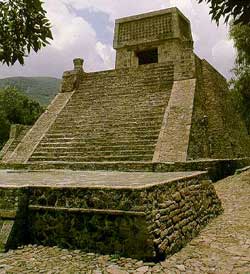 The central highlands of Mexico are known to locals as the “Land of Eternal Spring” – a fitting designation considering how spring often conjures images of both beauty and the promise of what is to come.
The central highlands of Mexico are known to locals as the “Land of Eternal Spring” – a fitting designation considering how spring often conjures images of both beauty and the promise of what is to come.
Reserve tickets online>>
Beauty and promise are abundant in the central highlands, as evidenced by “The Other Side of Mexico,” a travel-adventure film by Fran and Brooke Reidelberger.
Rockefeller Arts Center at the State University of New York at Fredonia will present the film on Saturday, Sept. 25 at 7:30 p.m. in King Concert Hall. It is the first of three offerings in the 2010-11 World Travel Series, which is sponsored by Fredonia Place as part of the Lake Shore Savings Season.
Mr. Reidelberger, a travel filmmaker with more than 30 years of experience, will be on hand to personally narrate the film. He returns to Rockefeller Arts Center following 2009’s presentation of “The Best of Bavaria.”
“There’s plenty to see in every direction,” Mr. Reidelberger said of traveling through the central highlands of Mexico.
In “The Other Side of Mexico,” the world “travel” takes on more than one meaning. There is the physical journey across the Mexican landscape, offering spectacular mountains, ancient Aztec pyramids and colorful flora. Then there is a journey through time, as heroes from Mexico’s battle for independence 200 years ago and artists who have long since passed from this world are introduced.
Popular tourist destinations, such as city plazas, colorful markets and distilleries where tequila is made, are well represented in the film. However, they share the spotlight with off-the-beaten-path discoveries such as a mountain haven that is the winter home to millions of Monarch butterflies and a small, rural village where New Year’s Day brings the “Dance of the Little Old Men.”
“The Other Side of Mexico” also highlights the people of Mexico, showing special traditions from the “Day of the Dead” celebrations honoring ancestors to the “Blessing of the Animals” in a special church ceremony.
While Reidelberger’s film masterfully captures the beauty and majesty of the country, it does not turn a blind eye to the every-day challenges faced by its people. This is clear during a segment shot in the rural farm lands north of Mexico City.
“It’s a place where poverty and wealth meet head on as burros and BMWs share the roadway,” Mr. Reidelberger noted.
Here, the film shows farmers harvesting gain with hand tools and pack animals in a process that has not changed in centuries. Mr. Reidelberger said filming the scenes created an “emotional conflict, as it was far too good a picture to pass up and far too sad a situation to truly enjoy.”
At the same time, Mr. Reidelberger finds a prime example of life in the modern world in Mexico City, where massive new skyscrapers mark the financial district of the world’s 13th largest economy.
It’s a paradox that leads Mr. Reidelberger believe that Mexico, at times, “doesn’t know if it’s Third World, First World or stuck helplessly in between.”
As his camera zooms in to capture the image of an active volcano near the city of Colima, Mr. Reidelberger notes the scene is a summary of what he discovered during his journey through the central highlands – “Life can be rather exciting on the other side of Mexico.”
Tickets are available at the Williams Center in advance or at the door. One child 12 and under is admitted free with each adult ticket.
For more information and a short video preview of this film, visit www.fredonia.edu/rac.



